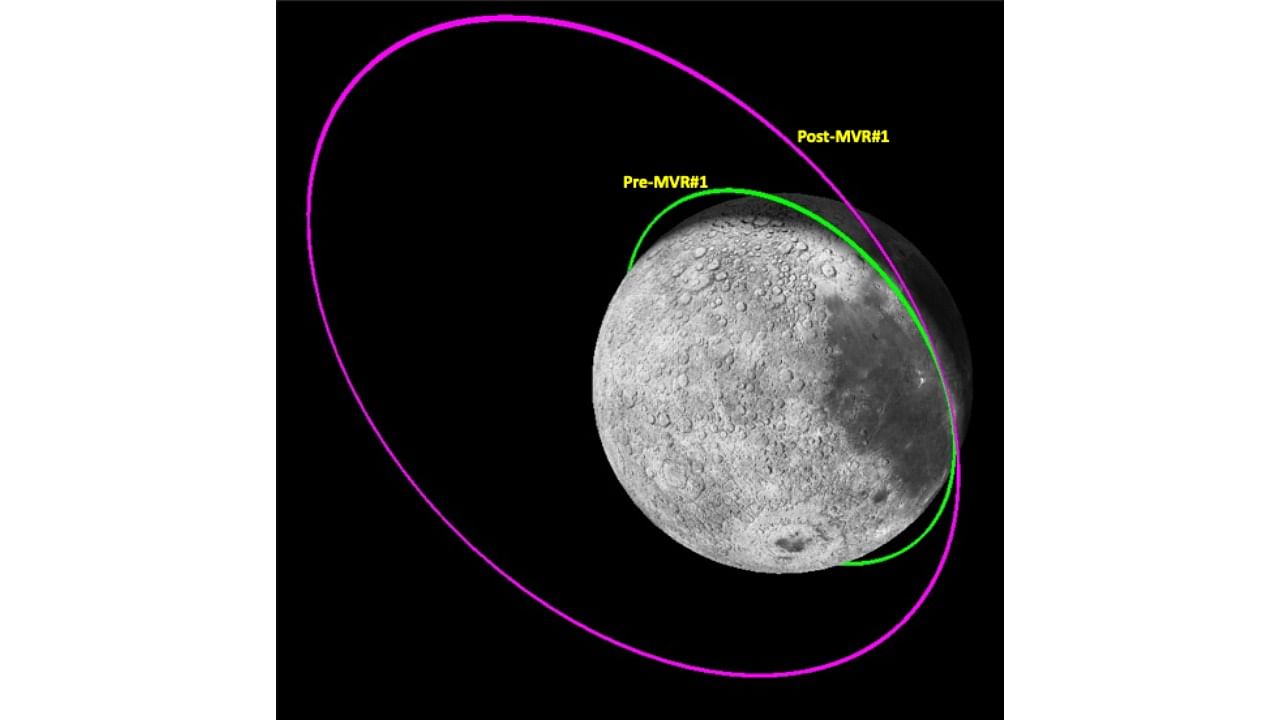
Chandrayaan-3 Propulsion Module.
Credit: X/@isro
Bengaluru: The Indian Space Research Organisation (Isro) has moved the Propulsion Module (PM) of Chandrayaan-3 from an orbit around the moon to an orbit around the earth, in a show of capability that promises to enable future lunar missions.
The use of the PM beyond its stated utility, in what Isro called a “unique experiment”, is also assessed as a demonstration of operation strategies to bring modules launched to the moon back to the earth.
The PM left the moon’s sphere of influence (SOI) on November 10, Isro said.
The PM’s original objective was to take the spacecraft’s lander module from the geo transfer orbit (GTO) to the final lunar polar circular orbit and separate the lander.
After the separation, the payload onboard the PM – Spectro-polarimetry of HAbitable Planet Earth (SHAPE) – was also operationalised, in line with the mission plan.
The initial plan was to operate SHAPE for about three months during the PM’s mission life. Isro said the precise orbit injection by the Launch Vehicle Mark-3 and the optimal earth and lunar burn manoeuvres left the PM with over 100 kg of fuel after a month’s operations in the lunar orbit. The space agency decided to use this fuel to derive additional information for future lunar missions.
The PM was re-orbited to a “suitable earth orbit” to reposition SHAPE for continued observation of the earth. Isro devised this return trajectory based on multiple factors that included the estimated availability of fuel and measures to ensure that the PM does not crash onto the moon’s surface or enter the earth’s geostationary orbit and pose threats to spacecraft.
TEI on October 13
The first orbit-raising manoeuvre was performed on October 9 and the Trans Earth Injection (TEI), on October 13. “In the post-TEI manoeuvre realised orbit, the propulsion module made four moon fly-bys before departing the moon’s SOI on November 10. Currently, the propulsion module is orbiting the earth and crossed its first perigee (the point in the orbit where the PM is the closest to the earth) on November 22, with an altitude of 1.54 lakh km,” Isro said. SHAPE is operating whenever the earth is in its field of view.
Isro said the success of the operation would help in planning and executing the trajectory and manoeuvres for moon-to-earth return missions, developing and validating software modules for similar manoeuvres, enabling gravity-assisted fly-bys across planets/celestial bodies, and avoiding clashes/collisions in line with the debris mitigation guidelines.
Citing current orbit predictions, Isro said there are no threats of close approach with any operational earth-orbiting satellites.
Chandrayaan-3, launched on July 14 from the Satish Dhawan Space Centre in Sriharikota, made its touchdown on the moon on August 23, making India the first country to access the lunar south pole.
The instruments in the lander and the rover conducted experiments on the moon’s surface through their mission life of one lunar day.